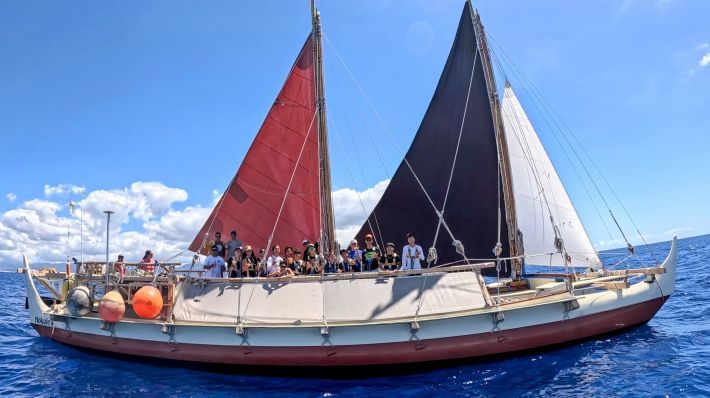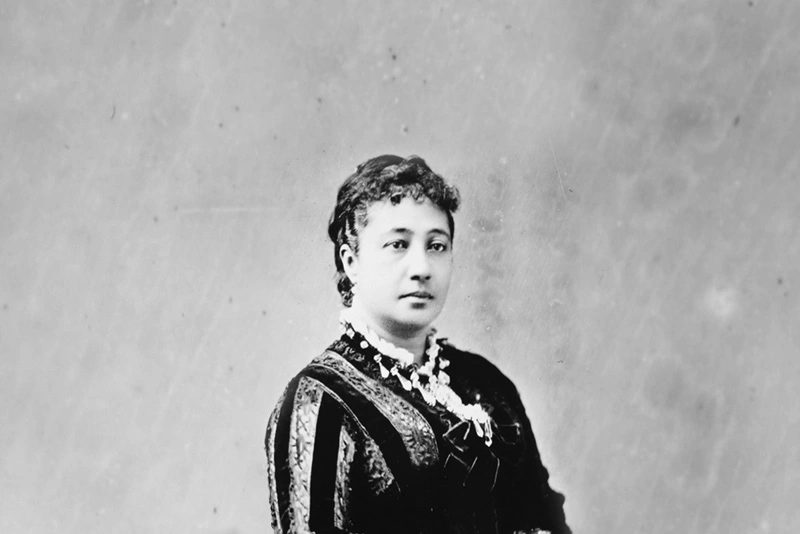Kamehameha Schools recognizes that world-class campuses start with exceptional kumu. As the kahua (foundation) of our learning community, their contributions and accomplishments are recognized year-round. By celebrating our teachers during Kumu Appreciation Week, we invest in the future of Hawaiʻi and propel Ke Ali‘i Pauahi’s vision fueled by their hard work and dedication.
Bethany Kimokeo’s KSK'05 teaching journey at her alma mater, Kamehameha Schools Kapālama, was more than just a career change – it was a transformative step towards empowering students with Hawaiian knowledge. After graduating with three degrees from the University of Hawaiʻi at Mānoa, her path was initially set for marine biology research. However, a fortuitous call from her high school teacher pushed her on a different path.
“I decided that I would make more of a difference as an educator for the lāhui,” Kimokeo said.
Kimokeo brings a unique blend of passion and heritage to her course ʻepekema kai, a marine science class ma ka ʻōlelo Hawaiʻi. In its third year, Kimokeo has inspired dozens of enthusiastic students through this convergence of language, aloha ʻāina and community in the classroom. At KS Kapālama, Hawaiian culture-based education isn’t just a concept; it’s a lived experience fostering a legacy of curriculum rooted in ʻike Hawaiʻi.
The first-time teacher actually pitched ʻepekema kai ma ka ʻōlelo Hawaiʻi as her dream course during her job interview. After refining her teaching methods, she pursued a master’s degree in ‘ōlelo Hawaiʻi, with her thesis centered around this very class. Inspired by mentors and kula kaiapuni kumu, Kimokeo intentionally crafted 12 units of marine science education in Hawaiian, paving the way for her first cohort of 24 students in 2018.
“‘Ōlelo Hawaiʻi allows our students to access ʻike kūpuna on a deeper level,” Kimokeo said. “There is such a deeper level of understanding and connection.”
It was the first time a science class was offered in Hawaiian at the Kapālama campus.
“The fact that keiki could do everything required of a science course in Hawaiian from writing lab reports to taking notes is incredible,” Kimokeo said. “I think I cried at our first open house.”
Kimokeo’s dedication goes beyond the curriculum; she diligently infuses her courses with ʻike Hawaiʻi, challenging students to redefine their perceptions of science and scientists. Gone are the stereotypes of lab-coated caricatures and instead, she urges the high schoolers to consider themselves and their ancestors as scientists with deep understandings of the natural world.
“Science is not separate from who we are,” Kimokeo said. “We can connect to our kūpuna through ʻike Hawaiʻi. That is science.”
For Chris Blake KSK'91, who works on special voyaging projects under Kapālama’s Teaching & Learning Innovations hui, advancing ʻike kūpuna in the classroom is integral to a student’s growth. The former physical science and Mālama Honua teacher has had a few promotions in his time at KS, all with the mission to equip haumāna with an education that allows them to kūpaʻa in both ʻōiwi and Western knowledge.
“What sets our haumāna apart is that they have a true understanding of who they are as kanaka,” Blake said. “A part of that is being representatives of their kūpuna and our ʻāina.”
Whether they are on a waʻa for Blake’s papa kilo hōkū or identifying limu with Kimokeo, students at KS Kapālama are immersed in Hawaiian culture-based education. The convergence of language, community and ʻāina epitomizes these scholarly experiences, shaping students as cultural ambassadors and sustainability-minded stewards.
Yet, this work isn’t without its challenges. Cultivating a learning environment steeped in indigenous knowledge is heavy kuleana and Blake encourages kumu to be thoughtfully brave when they take on this initative. However, he says the juice is worth the squeeze and the impact of Hawaiian culture-based education on students is not only beneficial in their academic journeys but also for their role as the next leaders of our lāhui.
“As lifelong learners, I want them to go farther than I ever could,” Blake said. “They are the change agents that we need in our communities.”
As Kimokeo and Blake continue to pave the way for Hawaiian culture-based education, their passion and commitment is inspiring generations of ʻōiwi leaders, who will carry the traditions and values of their Hawaiian culture into the future.

Chris Blake sails with students from his papa kilo hōkū.
TAGS
kapalama,kumu appreciation,native hawaiian identity,hawaiian culture based education,ʻike hawaiʻi,ks kapalama
CATEGORIES
Kaipuolono Article, Regions, Kona, O’ahu, Themes, Culture, Community, Kapalama Newsroom, Kapalama High School, Kapalama Home, KS Announcements, Newsroom, Kapalama, Alumni, Kapalama, Oiwi Leaders, Kapalama campus
Print with photos
Print text only










